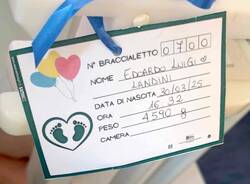Ever been up Monte San Giorgio? The guides are waiting for you
Spectacular views, palaeontology and nature, all on one excursion. The official guides organise routes for all ages.

Have you ever ended up at the entrance of an old mine, with a sheer drop below you? Have you felt the fatigue of an ancient miner bringing to light stones that smelt of bitumen?
Can you imagine the excitement felt by a palaeontologist when he finally finds a fossil, either microscopic, or six metres long, between the rock layers?
Would you allow yourself to be enchanted by rare, natural environments, such as dry grasslands, where you can admire an extraordinary variety of flora, and see butterflies flying, and grasshoppers jumping?
The Transnational Association of Official Guides for Monte San Giorgio invite you to visit this mountain, on the Italian-Swiss border, which is full of wonders. The twenty five Official Guides that belong to the association, with the contribution of other members who care about Monte San Giorgio, have undertaken to protect, enhance and publicise this heritage, which is recognised by UNESCO, the “intellectual” Agency of the UN, for its worldwide uniqueness.
This geo-paleontological heritage has exceptional and universal value because of the treasure hidden in its rocks, the fossils that tell a fascinating chapter in the history of the Earth. But not only. Discovering it and understanding it also means getting to know other aspects related to the territory, with its natural abundance, to culture and to art.
The Association set up a website in the summer of 2014, www.guidemsg.org, on which all of these peculiarities are presented (soon to be in four languages), with suggestions for short trips that last a half or whole day, and the opportunity to visit the Fossil Museum of Meride or Besano.
To request a guided tour or a PowerPoint presentation of Monte San Giorgio, just send an e-mail to info@guidemsg.org. The Official Guides will take you to the entrances of the mines of oil shale, to the paleontological excavations, to the foot of spectacular rock faces, through natural environments that are becoming less and less common, and to many other places that are worth discovering: from evidence of the farming community, to artistic works, from the dry grasslands to the vineyards, from the mineral mines to the coal mines, from the Factory of Spinirolo to the Church of San Silvestro, in Meride.
Who are the visitors we would like to bring to Monte San Giorgio? Adults and young people, families and schools. Indeed, for schools, there are guided tours, with reduced prices. The Association has prepared a specific educational excursion in the area, with gaming-work posts that will fascinate even the youngest, to help them understand a topic, such as geo-palaeontology, that, at first sight, might seem complicated.
These outdoor experiences can be supplemented with in-depth studies in class.
“We’ve produced a prospectus that illustrates the specific nature of Monte San Giorgio. It is available from public and private organisations in Canton Ticino and in the Provinces of Varese and Como (Municipalities, Travel Bureaus and Local Tourist Agencies). A pdf of the prospectus can also be downloaded from the website, or requested, by writing to the Association.”
The paths on this mountain, which are so attractive, are accessible in all seasons and by all ages. We look forward to seeing you.
Brief general information
The Transnational Association of Official Guides for Monte San Giorgio
In October 2011, a training course, requested by the Transnational Board of Monte San Giorgio, began, on behalf of the Foundation of Monte San Giorgio and the then Italian Convention of Mayors, to obtain the title of Official Guide of the UNESCO Site, Monte San Giorgio.
The training entailed about forty lessons given by lecturers on palaeontology, geology, history, botany and zoology, as well as by specialists operating in the area.
Twenty-five participants of Swiss and Italian nationality, with different backgrounds and professions, passed the exams in the summer of 2012.
In autumn 2012, the Official Guides formed the Association. Since then, the Association have organised training and study days. They offered their services to the organisations situated around the mountain, to accompany interested groups, on their behalf, and set up a website that promotes the mountain from all points of view.
Current committee members are:
Chairman: Alberto Poli, Brusino Arsizio-CH;
Vice Chairman: Emanuele Zenga, Albizzate-I;
Secretary: Stefania Zanoia, Clivio-I;
Treasurer: Wolfgang Küng, Meride-CH;
Member: Francesca Driutti, Brusino Arsizio-CH.
Guided tours for the public, to discover the most significant places on Monte San Giorgio are given in Italian, German and Swiss-German, English, French, Spanish, Russian and Belorussian.
The Association welcomes new members to share the passion for the area of Monte San Giorgio and some privileged training moments.
With a fee of SFr. 25.- (€ 20) per year, you can become a supporter.
Monte San Giorgio
The summit of Monte San Giorgio is 1097m above sea level, and offers the visitor a breath-taking view, from the central massif of the Alps, with the Bernese, Valais and Valle d’Aosta mountains, which rise to over 4000m, to the southern ridges of Monviso, of Gran Paradiso and Grivola, with the industrial areas of Lombardy and Piedmont below.
The mountain stands in a geographically compact area of about 2.4 km2; to the north, it is surrounded by two branches of Lake Ceresio, and to the south, it slopes gently down towards the Po Valley. The area is crossed by the national border. On the Italian side, the towns in the area are Besano, Clivio, Porto Ceresio, Saltrio and Viggiù, and on the Swiss side, Brusino Arsizio, Riva San Vitale, Stabio and Mendrisio (with its municipalities of Meride, Arzo, Besazio, Tremona, Rancate and Ligornetto). The protection zone or WHP (World Heritage Property), that is, the side of the mountain that is of scientific significance, touches the territories of the municipalities of Brusino Arsizio, Meride (Mendrisio), Riva San Vitale, Besano, Porto Ceresio and Viggiù, and the other municipalities have been designated WHAs (World Heritage Areas), the buffer zone.
The cantonal law on the protection of nature prohibits searching for and gathering fossils in Ticino. The Italian laws do likewise.
The numerous paths that cross Monte San Giorgio are easy to walk along, and do not have any steep slopes. The routes suggested on the Association’s website illustrate and describe various types of excursion, in terms of duration and location. The potential of Monte San Giorgio never ceases to amaze.
The geo-paleontological heritage
The rocky pyramid of Monte San Giorgio consists of an incredible variety of rocks, whose origin is strictly linked to the different environments that appeared over time (sea bottoms, inhospitable lands covered with glaciers, volcanoes) attributed to what happened between the Carboniferous (from 360 to 300 million years ago) and Quaternary periods (from 1.7 million years ago to the present day). The layers are piled one on top of another and slope gently to the south, sinking beneath the Po Valley.
While rising and turning, without withstanding any metamorphism during the Alpine orogeny (which began 95 million years ago, and which still goes on), the volcanic and sedimentary rocks of Monte San Giorgio kept their order of stratification unaltered.
Monte San Giorgio, which is interesting for the palaeontologists, appears as a sequence of chalky layers that were deposited during the Middle Triassic Period (247-237 million years ago) when the emerged lands came together to form a supercontinent called Pangea, surrounded by a vast ocean.
Part of this ocean made its way to the centre of Pangea, forming a sea called Tetide.
At that time, Monte San Giorgio was a lagoon and was located at the western edge of the Tetide Sea, on the northern coast of the African continent.
In the lagoon of Mount San Giorgio, a great variety of marine life adapted, which in a long period of 4-5 million years (from 243 to 239 million years ago) found in that stretch of sea the perfect living conditions for rapid evolution, but also the best preconditions for preserving the animals in that environment, after they had died and been deposited on the sea bottom.
Today, the rocky layers contain thousands of well-preserved, spectacular fossils, of fish, reptiles, especially marine reptiles, invertebrates (including rare insects), protozoans and plants.
Historic-cultural heritage
The rocks of Monte San Giorgio have marked the local history, starting at least in the 15th century, contributing to both the artistic and economic development in the region.
Indeed, the extraordinary variety of rocks on the mountain helped the opening of ornamental stone quarries (Arso, Saltrio, Viggiù). Churches and civil construction bear witness to the exploitation and tell stories, of the past, of stone-cutters and of architects, who exported their art even outside Ticino.
At the end of the 18th century, the first mines for extracting oil shale were opened. In 1902, more successful use of these layers of rock, which are full of organic substances, began. They were used to produce an ointment, Saurolo, which had great healing properties, in the Spinirolo factory, in Meride, and in the Besano factory. The smokestack of the old factory of Spinirolo still stands today, testifying to the history of mineral exploitation on the Monte San Giorgio. However in Besano, there are no traces left.
The work of extracting the oil shale was decisive for the discovery of fossil remains among the rocks of Monte San Giorgio. Their chance discovery soon marked the beginning of a systematic collection, the basis for the excavations and scientific research.
In 1863, the abbot, Antonio Stoppani together with the Civic Museum of Natural History, in Milan, started the first paleontological excavations in the area of Besano, on Italian soil. In 1919, the palaeontologist Bernhard Peyer, of the Institute and Museum of Palaeontology of the University of Zurich became interested, for the first time, in these findings on the Swiss side of the mountain, in the area of Tre Fontane in Serpiano.
Since then, a lot of excavation campaigns have followed.
Since 2006, the Cantonal Museum of Natural History (Lugano) has carried out paleontological research on the Swiss territory, every year. The most recent occurred in the Sceltrich Valley (Meride).
The natural heritage
The treasure of Mount San Giorgio lies deep within its rocks, but the treasure chest that holds it, namely the living nature of the mountain, is no less fascinating.
The wealth of flora and, of vegetation in general, reflects the variety of geological substrates and microclimates on the mountain.
On the southern side, it is possible to find vegetation linked to the carbonate rocks (limestone and dolomite), such as the mixed woods of lime and other broad-leaves, and the thermophile forests of oak and hop hornbeam. Near the summit, on arid soils, there are downy oaks, in open formation that border on dry grasslands. On the siliceous base of Mount San Giorgio, on the border with the lake, acidophilic vegetation grows, dominated by the chestnut, the durmast oak, and the beech, further up. On the ranges in the area, which lack damp environments, the dark ravines, carved into the limestoneby the streams, it is possible to find ash, sycamore and linden trees that grow together with mosses and ferns on the steeper walls.
Of particular significance is the presence of dry grasslands, vestiges of, now abandoned, hay grasslands. Their soil, which is poor in nutrients, hinders the dominance of a single herbaceous species, thereby encouraging a wide variety of flora.On Mount San Giorgio, it is possible to find several kinds of orchids as well as the scented iris and the rare, fragrant bellflower, Adenophora liliifolia.
Mushrooms too form several communities that follow the change of the substrate, so one finds mushrooms that are typical of carbonate soil, of morainic deposits, and otherstypical of dry grasslands.
Less elusive are the birds that you can hear and watch walking along the paths of Monte San Giorgio: the finch, the blackbird, a variety of tits, the great spotted woodpecker and the hoopoe in its northernmost distribution area. The presence ofperegrine falcons nesting on the mountain, and rare birds of prey, such as kites and buzzards, are very interesting.
The region of Monte San Giorgio is included in the Federal List of Landscapes and Natural Monuments of National Importance (IFP). Thus, the flora and fauna areprotected and it is prohibited to damage any plant species and to catch animals.
La community di VareseNews
Loro ne fanno già parte
Ultimi commenti
PaoloFilterfree su Vannacci a Varese, sala gremita per il suo attacco frontale: “Von der Leyen? Sembra viva”
Castegnatese ora Insu su Raid vandalico nella tensostruttura di Castronno: rubati i palloni e divelti gli estintori
Bruno Paolillo su Varese e la crisi del commercio: interviene anche Paolo Ambrosetti tra dati allarmanti e la replica del Comune
GrandeFratello su Arrivano i treni Varese-Milano Centrale. Ma solo per due giorni
Massimo Macchi su Tarip, le prime fatture fanno discutere. Coinger: "Una rivoluzione culturale"
PaGi su Si è ribaltato un altro grosso tir, traffico in tilt tra Somma Lombardo e Malpensa lungo la via Giusti














Accedi o registrati per commentare questo articolo.
L'email è richiesta ma non verrà mostrata ai visitatori. Il contenuto di questo commento esprime il pensiero dell'autore e non rappresenta la linea editoriale di VareseNews.it, che rimane autonoma e indipendente. I messaggi inclusi nei commenti non sono testi giornalistici, ma post inviati dai singoli lettori che possono essere automaticamente pubblicati senza filtro preventivo. I commenti che includano uno o più link a siti esterni verranno rimossi in automatico dal sistema.